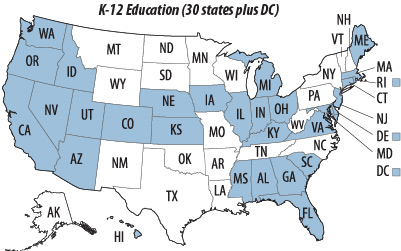With the House expected to vote today on legislation that includes fiscal relief for states, we've updated our reports on state budget cuts and cuts to education programs and jobs. We've bulleted the highlights below.
As we've mentioned before, federal Recovery Act assistance to states will largely run out this year, which could cost hundreds of thousands of jobs and worsen cuts to state public services. The loss of education jobs alone stands at 105,000 and is expected to keep rising.
- K-12 education: At least 30 states and the District of Columbia are cutting aid to K-12 schools and various education programs. California, Michigan, and Mississippi have made significant cuts to school aid. Hawaii cut 17 days from the current school year, furloughing teachers. A cut in funding means that as many as 10,000 children in Illinois may lose eligibility for early childhood education, and Massachusetts is reducing funding for a number of early care programs. Current and additional education cuts undermine reform initiatives that many states are undertaking with the federal government's encouragement, such as supporting professional development to improve teacher quality, improving interventions for young children to heighten school readiness, and turning around the lowest-achieving schools, to name just a few. Read more.

Advertisement
Nicholas Johnson is director of state fiscal policy at the Center on Budget and Policy Priorities and regularly blogs on the Center's blog, Off the Charts.
